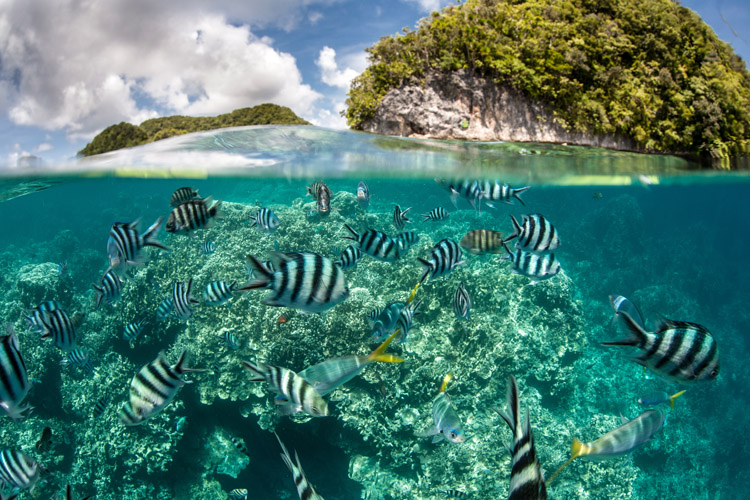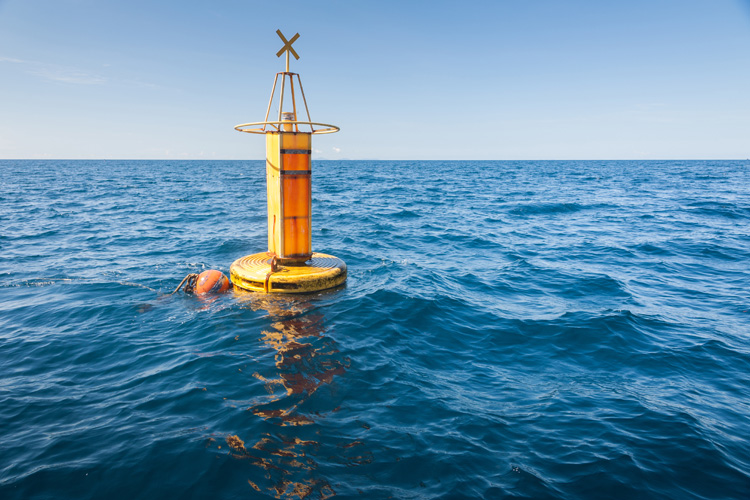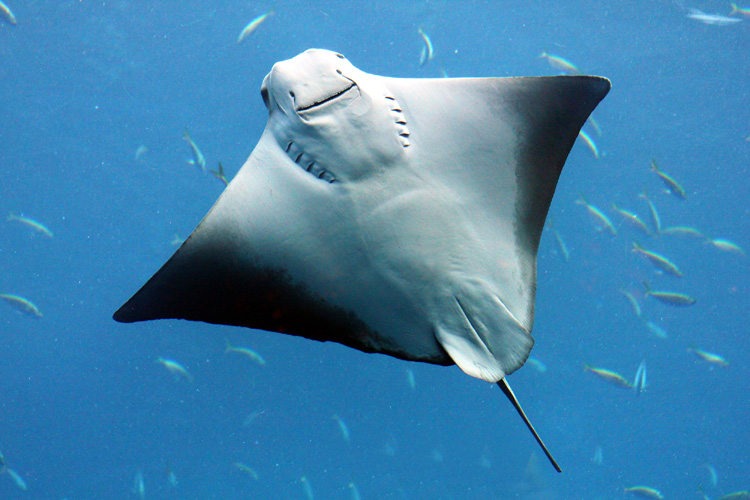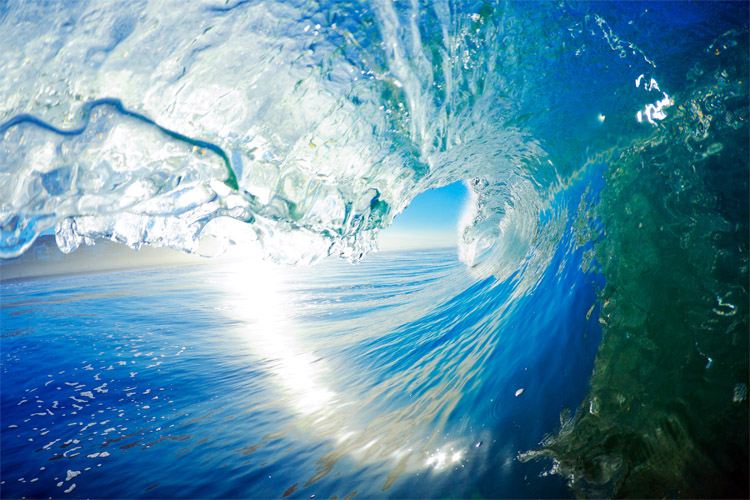Oceanography is the science that studies the oceans of the world, their ever dynamical interactions, fluxes, and changes from ecosystems and marine life to waves and currents, sediment movements, and seabed geology.
Today, marine science, also known as oceanology, is an interdisciplinary activity that works in conjunction with weather and land-related disciplines.
The five oceans of the world cover approximately 71 percent of the Earth's surface and represent many different things to different people.
To some, it's a synonym for tranquility, relaxation, beauty, and wilderness. It's a place where they can find refuge from urban stress and busy lives.
Others see it as a recreational space where you can challenge yourself physically and spiritually - surfing, swimming, sailing, etc.
To others, it's a mysterious place full of hidden wonders but also a source of income or an inspiration for fine arts.
Planet Earth wouldn't be a habitable place without the mass of water we call the ocean.

The History of Oceanography
Humans started analyzing and studying the seas, the oceans, and their currents and tides in prehistoric times.
They started collecting visual data to help plan fishing sessions and oceanic explorations.
As a result, sailing techniques evolved, and the world's greatest ocean explorers ended up mapping the planet.
By the end of the 16th century, cartographers already had a more or less clear idea and projection of Planet Earth.
However, the birth of modern oceanography and the systematic and scientific study of the world's oceans is often associated with the Challenger Expedition (1872–1876).
The scientific journey around the globe resulted in the identification of 4,700 new species of marine life, over 260 seawater temperature observations, and 490 deep-sea soundings.
The HMS Challenger, led by Captain George Nares and under the scientific supervision of Charles Wyville Thomson (University of Edinburgh, Merchiston Castle School), traveled nearly 70,000 nautical miles and pioneered the science of the oceans.
From that moment on, the understanding of the planet's oceans became a science in its own right.
The world's oldest oceanographic organization is the International Council for the Exploration of the Sea (ICES). The institution was founded on July 22, 1902, in Copenhagen, Denmark.
Today, ocean buoys represent a fundamental tool in the analysis and interpretation of oceanographic and atmospheric data in real time.

The Branches of Oceanography
The four main academic disciplines or branches within oceanography are geological oceanography, chemical oceanography, physical oceanography, and biological oceanography.
Geological oceanography, also known as marine geology, is the study of the structure of the seafloor and how the seabed has changed through time.
It identifies and analyzes the creation of seafloor features and the history of sediments deposited on them.
Chemical oceanography studies the chemical composition and properties of seawater. It reaches conclusions on how to extract certain chemicals from seawater and the effect of pollutants.
Physical oceanography studies the waves, the tides, the swells, the currents, the relationship between the oceans and the atmosphere, how it influences climate and weather, and the transmission of sound and light in the oceans.
Biological oceanography is the study of the numerous oceanic life forms, the relationships between themselves, the adaptations to the marine environment, and the development of sustainable methods of harvesting seafood.
There are other subfields of study that relate - directly and indirectly - to the above branches of oceanography.
They are ocean engineering, paleoceanography, marine archaeology, ocean policy, and maritime education.

Famous Oceanographers
Jacques-Yves Cousteau (1910-1997) is often regarded as the world's most famous oceanographer. He was a multifaceted, imaginative, and creative person with multiple interests.
Cousteau wrote dozens of books about the oceans, participated in hundreds of marine documentaries and films, took thousands of underwater photos, and sailed the world several times.
The French ocean explorer was also an active conservationist, always prompt to stand up for and protect the ocean resources and marine life.
Cousteau practically invented scuba diving.
Vagn Ekman (1874-1954), Jacques Piccard (1922-2008), Walter Munk (1917-2019), and Sylvia Earle (1935-) are also some of the most famous oceanographers of all time.
They have also contributed to improving our knowledge of the world's oceans.
The Legacy of Walter Munk
Walter Heinrich Munk was born on October 19, 1917, in Vienna, Austria. In 1932, he was sent by his parents to New York. They wanted him to follow in the family's footsteps in banking.
"My mother exiled me because I was doing very poorly in high school, and the reason, I think, was that I enjoyed skiing so much," Munk once said.
However, Munk hated the financial business and ended up at the Scripps Institution of Oceanography in La Jolla, California. In 1940, he earned a master's degree in geophysics.
But, while working at Scripps at the U.S. Navy Radio and Sound Laboratory, Munk and his colleagues developed methods and formulas for predicting ocean conditions in any given location.
The surf forecasting techniques initiated at Scripps were used by the Allies to plan the Invasion of Normandy, the critical chapter that even led to the defeat of the Nazis.
The American and British oceanographers were able to indicate the best date for D-Day and improve the assault conditions of the largest amphibious invasion in history.
In 1947, a couple of years after the end of World War II, Walter Munk completed his Ph.D. in oceanography at the University of California, Los Angeles.
The Einstein of the Ocean
In the following decades, the "Einstein of the Ocean" would participate in multiple research and development activities involving ocean circulation and currents, the study of the sea floor, and the behavior of ocean waves.
For many, Walter Munk is the father of surf forecasting. The Austrian oceanographer began his studies at a time when there were no computers, and all wave forecast predictions were drawn by hand.
Between the 1970s and the 1990s, Munk dedicated his time to ocean acoustic tomography, tide patterns, and the relationship between ocean temperature and sea levels.
Recently, Water Munk was involved in raising awareness about the problems associated with global warming.
In 2017, the city of La Jolla dedicated a section of its boardwalk to the legendary oceanographer - the Walter Munk Way.
"The CO2 we are putting into the atmosphere now is producing a rate of sea-level rise so that the Walter Munk Way is not going to enjoy another 100 years," he said at the time.
Munk passed away at 101 at Seiche, in La Jolla, San Diego, California.
He is survived by his daughters, Edie Munk and Kendall Munk, and three grandsons.
